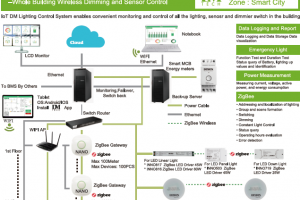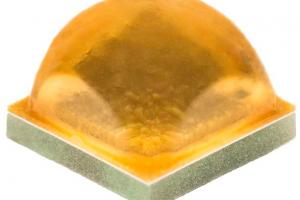In a large open office on the fourth floor of the Lighting Research Center (LRC) at Rensselaer Polytechnic Institute, lighting scientist Leora Radetsky lifts the blinds and lets in the sunlight. The overhead LED luminaires dim in response, fluidly, maintaining consistent light levels on the desk spaces. She lowers the blinds and the luminaires instantaneously increase light levels in response.
“These intelligent luminaires with integrated sensors and controls promise ideal light levels on the workplane with significant energy savings,” said Radetsky, who is leading a team of researchers to evaluate this emerging technology, in a study funded by the Bonneville Power Administration (BPA) and Washington State University.
Since each luminaire has a built-in occupancy sensor, ideally, the system can more accurately determine when a person is in the room, compared with motion sensors of the past decade. After a specified vacancy period, the luminaires fade from a task level to a background level or switch off. The integrated photosensors, with automatic dimming daylight harvesting, also promise to maintain consistent light levels in response to fluctuations in available daylight.
Radetsky and her team are evaluating commercially-available intelligent LED luminaires with integrated sensors and controls to examine system operational characteristics, commissioning, and energy savings under field conditions, and conducting human factors experiments to study installation and usability. The systems are being evaluated in a daylighted office space and a conference room at the LRC.
The research team has published their initial findings, and the report is available at the BPA website. The LRC’s Lighting Energy Alliance (LEA) partnered with BPA on this phase of the project to expand the number of products evaluated. Current LEA members are Efficiency Vermont, Energize Connecticut, and National Grid.
Key findings from the report include the fact that the systems have the potential for significant energy savings compared to time clock control or power density requirements, although energy usage depends on the system configuration. Manual-on controls appear to save more energy than automatic-on controls. One system provided access via USB to instantaneous power readings. Beyond that, none of the systems logged or reported energy usage.
Regarding installation and usability, the LRC found that all of the products tested were easy to install, but challenging to commission. Initialization of some of the wireless dimming wall switches was complicated, and the systems appeared to lack any mechanism to adjust the default sensor-to-task light ratio. In some cases, this produced low light levels and occupant dissatisfaction. When the ambient light levels were dim, occupants were satisfied with products that provided manual override capability, and products without this capability were less satisfying. Additional findings are available in the full report.
Radetsky is currently evaluating three additional systems with integrated sensors and controls, and expects to have a report published by the end of the year.
To be notified when research results are available, sign up for LRC news alerts at http://www.lrc.rpi.edu/aboutUs/mailingList.asp.







